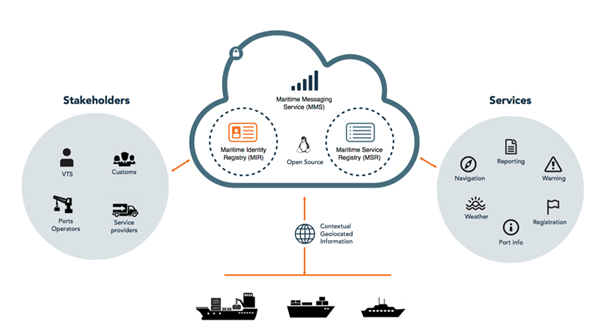New data services require new digital infrastructure. Next-generation connectivity platforms will support real-time and high-bandwidth digital maritime data exchange.
Maritime connectivity platform
The Maritime Connectivity Platform (MCP) is a framework that enables secure digital services in a maritime environment. It fulfills all requirements of a next-generation digital platform (cf. IALA Guideline 1161).
The MCP aims to provide:
- Maritime cyber security, including infrastructure for digital identity management. The MCP is currently the only viable solution for bi-directional message authentication and/or encryption in digital maritime services.
- Application of the Maritime Resource Name (MRN) scheme. The MRN is a standard used to uniquely identify maritime resources. This includes maritime services, vessels, user identities and other entities (e.g., virtual AtoNs).
- A service for the reliable message exchange.
- Ways to publish, manage and make available next-generation maritime services.

This infographic illustrates the concept of the Maritime Connectivity Platform. It depicts three parts: stakeholders in maritime operations, a digital platform consisting of three components, and a suite of maritime services. The digital platform emphasizes open-source access, identity and service registries, a messaging service, and the integration of geolocated information. The MCP has multiple use-cases in services like navigation, weather, and port info.
We are currently planning an MCP trial to test its suitability for Australian waters. The platform will provide next generation maritime services such as MSI, AtoN, SAR and VTS.
Image courtesy maritimeconnectivity.net